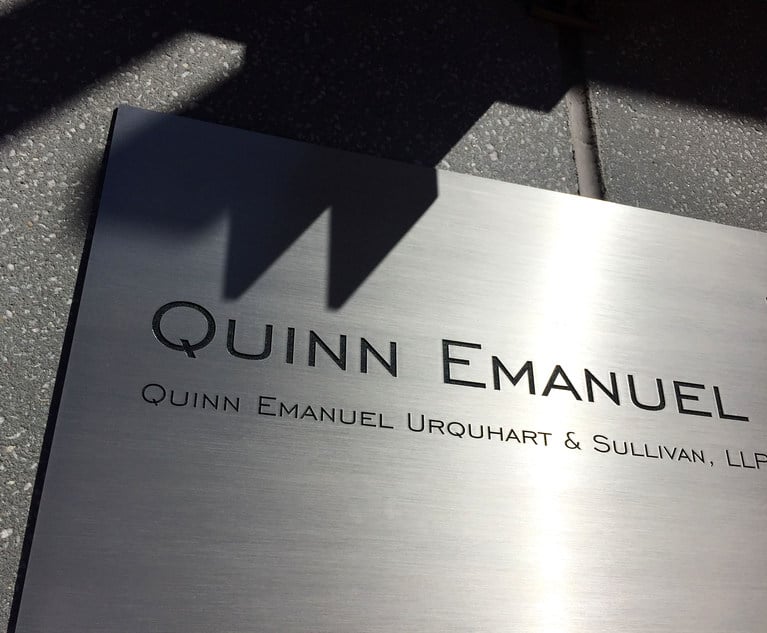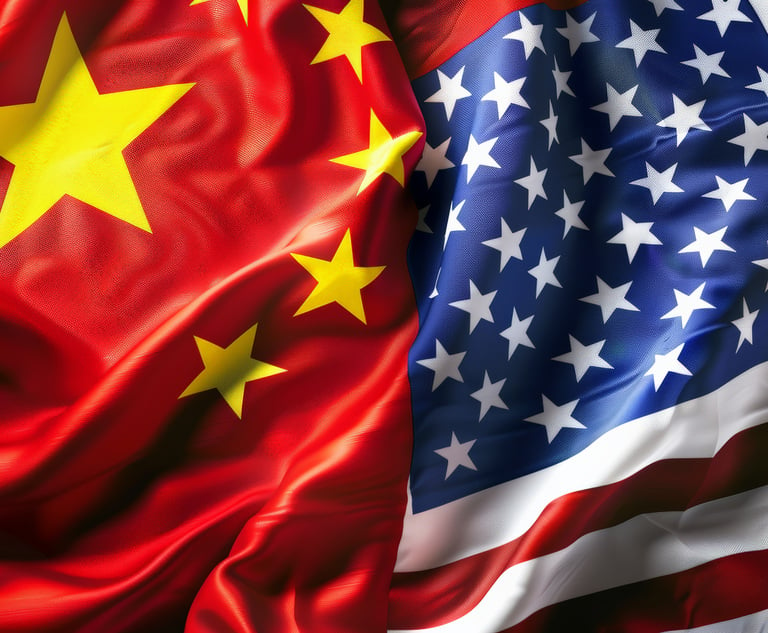The Asia 100: Chinese law firms see dramatic growth as mergers drive Asia-Pac expansion
Asia-Pacific headcount hikes outpace global growth as China leaders emerge
October 26, 2016 at 04:36 PM
7 minute read
The largest 50 law firms based in the Asia-Pacific region have raised their lawyer numbers by 65% since 2011 to reach a total of 41,255, according to the latest data from The Asia 100 survey.
That rate far outpaces the headcount growth of The Global 100 in the same period (14%) or by The Am Law 100 (8%).
Some of the increase in Asia-Pacific headcount in recent years stems from cross-border mergers with already sizeable international firms. The second-placed firm on our list last year, Dacheng, took the top spot this time after its history-making tie-up with global giant Dentons boosted the combined firm's headcount from 3,700 to 6,568.
A series of mergers – between China's King & Wood and Australia's Mallesons Stephen Jaques in 2012, then with SJ Berwin in 2013 – helped put King & Wood Mallesons third on our list with 2,250 lawyers. Herbert Smith Freehills, fourth on our list with 1,956 lawyers, is the product of the 2012 combination between Australia's Freehills and Herbert Smith.
But organic growth and smaller, regional acquisitions are also part of the story, especially for Chinese firms. Six Chinese firms – Yingke, Zhong Lun, AllBright, DeHeng, King & Capital and Beijing DHH – have managed to double their size since 2011 without a major merger.
To compile the Asia 100 rankings, we relied on three sets of data: a survey of firms based in the Asia-Pacific region; The National Law Journal 500 survey of US firms; and Legal Week's UK Top 50. All lawyer numbers are full-time equivalents for 2015. Our survey debuted in January 2013 as The Asia 50, using data for calendar year 2011; we have since expanded the survey to The Asia 100 with a second list, The Global Players, composed of the 50 international firms with the most lawyers in the Asia-Pacific region.
Continuing a trend from our rankings for 2014, Chinese firms occupied eight out of the top 10 spots on the Asia 50. Five years ago, the Big Six Australian firms captured the most top 10 spots. The shift has various causes, including a slowdown in the Australian economy and mergers involving several Big Six firms; the former Mallesons Stephen Jaques is now counted as a Chinese firm, since the biggest share of its lawyers are in that country, and Blake Dawson is now part of Ashurst.
But the expansion of Chinese firms is not limited to the top 10. The number of Chinese firms on the Asia 50 increased to 24 last year from 17 in 2011, while the total number of lawyers at Chinese firms has more than doubled, to 27,687 last year from 11,187 in 2011. All but two of the 11 new firms on the list since 2011 are also Chinese firms, the latest entrants being Hylands, Co-effort and Tianyuan.
The two new non-Chinese firms on the list are India's Cyril Amarchand Mangaldas and Shardul Amarchand Mangaldas – the results of the high profile breakup of India's largest firm, Amarchand & Mangaldas & Suresh A Shroff & Co. Legacy Amarchand had ranked 13th on our list last year with 690 lawyers; its two successor firms are smaller but have already notched impressive growth rates. With 490 lawyers, Mumbai-based Cyril Amarchand is 26th on our list, the highest-ranked Indian firm, and Shardul Amarchand is 33rd with 418 lawyers.
Other Indian firms, as well as firms from Japan, Korea and Singapore, generally saw more modest but stable growth over five years. The fastest-growing firm in each of those countries since 2011 is Japan's TMI Associates (a 46% increase in number of lawyers), Korea's Lee & Ko (a 65% increase), Singapore's Rajah & Tann (a 45% increase) and India's AZB & Partners (a 53% increase). TMI and Rajah & Tann, in particular, have expanded rapidly beyond their home countries into the emerging markets of Southeast Asia.
For global firms in Asia, it is harder to make a five-year comparison because our 2011 charts ranked US and UK firms separately. But it is clear that, collectively, large US firms managed to expand in Asia between 2011 and 2015 more than their UK counterparts did. Last year, the 33 US firms ranked on our Global Players chart had 28% more lawyers in the Asia-Pacific region than the 50 US firms on our 2011 chart. Meanwhile, the 16 UK firms on the list in 2015 had slightly fewer lawyers in Asia than the 15 UK firms on our list in 2011.
Among this year's top 50 global firms in Asia, 15 firms saw their Asia headcounts drop during the past five years, but the majority experienced growth. Nine firms at least doubled their Asia counts after five years.
Morgan Lewis & Bockius is the single largest gainer by percentage in five years, growing from just 10 lawyers in 2011 to 90 lawyers last year. Nearly all of the firm's growth happened in the past two years, when it added 15 lawyers in Beijing and Tokyo through its acquisition of legacy Bingham McCutchen in 2014 and gained about 80 lawyers from its merger with Singapore's Stamford Law. Squire Patton Boggs, Ropes & Gray and Kirkland & Ellis, also growing from relatively small bases, all more than tripled the number of Asia-based lawyers during the five-year period.
Houston-based Vinson & Elkins and Los Angeles-based O'Melveny & Myers both saw their Asia-based headcounts decline by more than 50% since 2011. Vinson, which has fallen out of the top 50 since our 2014 ranking, had as many as 40 lawyers in Asia in 2012, mostly advising state-owned Chinese energy companies' outbound investments. But by 2015, that number had fallen to 15 lawyers as oil prices dipped and anti-graft scrutiny curbed a deal wave in China's state-owned oil sector.
"Over the past several years, our state-owned enterprise clients have been less active in outbound energy investments, which has had an effect on demand for legal services in the region," says Mark Kelly, Vinson's Houston-based chairman. Kelly says the firm remains committed to Asia and is currently in discussions with lateral partner candidates for its Asia practice.
In 2015, O'Melveny reported 53 lawyers in Asia, fewer than half the 114 lawyers the firm reported in 2011. The firm has seen significant departures, primarily in Singapore, which have left only one resident partner in the city-state. In a statement, an O'Melveny representative said that having large on-the-ground staffing in any single office is no longer the firm's focus; rather, it supports clients across a global platform.
Looking ahead, will the growth story in Asia continue? Earlier this year, The Asian Lawyer reported that firms such as Skadden Arps Slate Meagher & Flom, Vinson, and Shearman & Sterling were relocating partners back to the US and Europe as practice focuses shift from inbound to outbound Asian investment. In September, Cadwalader Wickersham & Taft joined a handful of US firms that have closed offices in China. If the Chinese economy cools off further, more cutbacks are likely. Stay tuned.
This content has been archived. It is available through our partners, LexisNexis® and Bloomberg Law.
To view this content, please continue to their sites.
Not a Lexis Subscriber?
Subscribe Now
Not a Bloomberg Law Subscriber?
Subscribe Now
NOT FOR REPRINT
© 2025 ALM Global, LLC, All Rights Reserved. Request academic re-use from www.copyright.com. All other uses, submit a request to [email protected]. For more information visit Asset & Logo Licensing.
You Might Like
View All
X Ordered to Release Data by German Court Amid Election Interference Concerns

Quinn Emanuel's Hamburg Managing Partner and Four-Lawyer Team Jump to Willkie Farr

Trump ICC Sanctions Condemned as ‘Brazen Attack’ on International Law

U.S.- China Trade War: Lawyers Label WTO Dispute Pointless, Clients Have Their Hands Tied
Trending Stories
- 1States Accuse Trump of Thwarting Court's Funding Restoration Order
- 2Microsoft Becomes Latest Tech Company to Face Claims of Stealing Marketing Commissions From Influencers
- 3Coral Gables Attorney Busted for Stalking Lawyer
- 4Trump's DOJ Delays Releasing Jan. 6 FBI Agents List Under Consent Order
- 5Securities Report Says That 2024 Settlements Passed a Total of $5.2B
Who Got The Work
J. Brugh Lower of Gibbons has entered an appearance for industrial equipment supplier Devco Corporation in a pending trademark infringement lawsuit. The suit, accusing the defendant of selling knock-off Graco products, was filed Dec. 18 in New Jersey District Court by Rivkin Radler on behalf of Graco Inc. and Graco Minnesota. The case, assigned to U.S. District Judge Zahid N. Quraishi, is 3:24-cv-11294, Graco Inc. et al v. Devco Corporation.
Who Got The Work
Rebecca Maller-Stein and Kent A. Yalowitz of Arnold & Porter Kaye Scholer have entered their appearances for Hanaco Venture Capital and its executives, Lior Prosor and David Frankel, in a pending securities lawsuit. The action, filed on Dec. 24 in New York Southern District Court by Zell, Aron & Co. on behalf of Goldeneye Advisors, accuses the defendants of negligently and fraudulently managing the plaintiff's $1 million investment. The case, assigned to U.S. District Judge Vernon S. Broderick, is 1:24-cv-09918, Goldeneye Advisors, LLC v. Hanaco Venture Capital, Ltd. et al.
Who Got The Work
Attorneys from A&O Shearman has stepped in as defense counsel for Toronto-Dominion Bank and other defendants in a pending securities class action. The suit, filed Dec. 11 in New York Southern District Court by Bleichmar Fonti & Auld, accuses the defendants of concealing the bank's 'pervasive' deficiencies in regards to its compliance with the Bank Secrecy Act and the quality of its anti-money laundering controls. The case, assigned to U.S. District Judge Arun Subramanian, is 1:24-cv-09445, Gonzalez v. The Toronto-Dominion Bank et al.
Who Got The Work
Crown Castle International, a Pennsylvania company providing shared communications infrastructure, has turned to Luke D. Wolf of Gordon Rees Scully Mansukhani to fend off a pending breach-of-contract lawsuit. The court action, filed Nov. 25 in Michigan Eastern District Court by Hooper Hathaway PC on behalf of The Town Residences LLC, accuses Crown Castle of failing to transfer approximately $30,000 in utility payments from T-Mobile in breach of a roof-top lease and assignment agreement. The case, assigned to U.S. District Judge Susan K. Declercq, is 2:24-cv-13131, The Town Residences LLC v. T-Mobile US, Inc. et al.
Who Got The Work
Wilfred P. Coronato and Daniel M. Schwartz of McCarter & English have stepped in as defense counsel to Electrolux Home Products Inc. in a pending product liability lawsuit. The court action, filed Nov. 26 in New York Eastern District Court by Poulos Lopiccolo PC and Nagel Rice LLP on behalf of David Stern, alleges that the defendant's refrigerators’ drawers and shelving repeatedly break and fall apart within months after purchase. The case, assigned to U.S. District Judge Joan M. Azrack, is 2:24-cv-08204, Stern v. Electrolux Home Products, Inc.
Featured Firms
Law Offices of Gary Martin Hays & Associates, P.C.
(470) 294-1674
Law Offices of Mark E. Salomone
(857) 444-6468
Smith & Hassler
(713) 739-1250









